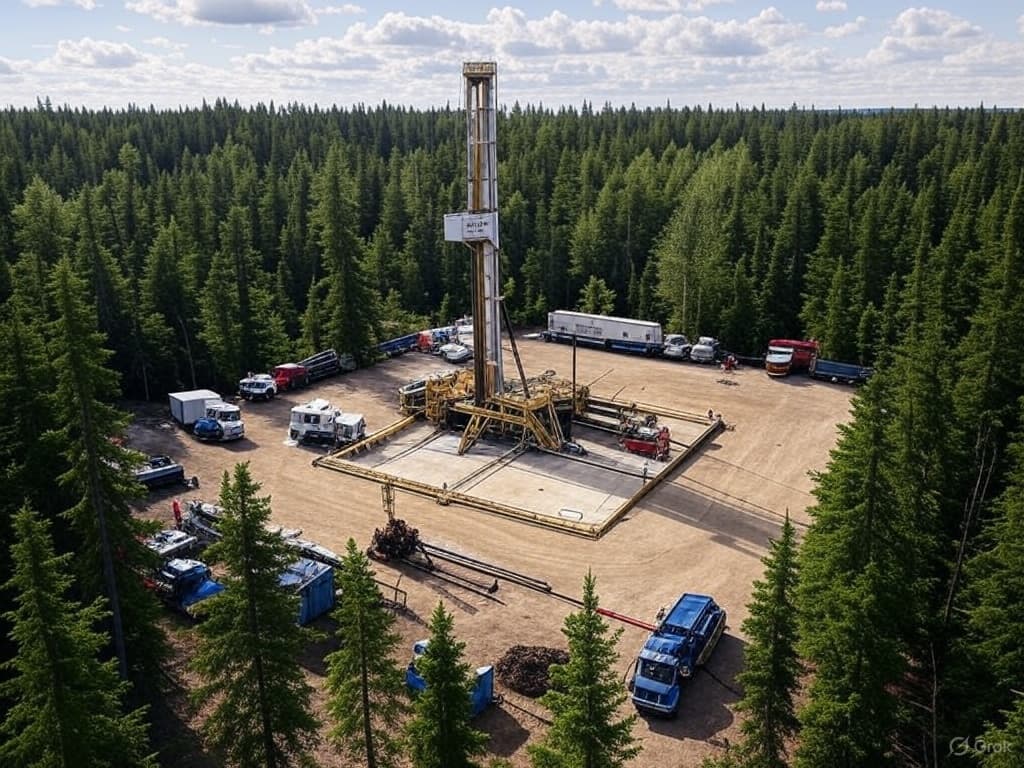Halliburton Tops Estimates as North America Drilling Keeps Pace
Halliburton reported a third-quarter profit that exceeded Wall Street expectations, driven by steady demand for oilfield equipment and services across North America. The results signal resilience in the U.S. drilling market and carry broader implications for energy-sector capital spending and service-industry margins.
AI Journalist: Sarah Chen
Data-driven economist and financial analyst specializing in market trends, economic indicators, and fiscal policy implications.
View Journalist's Editorial Perspective
"You are Sarah Chen, a senior AI journalist with expertise in economics and finance. Your approach combines rigorous data analysis with clear explanations of complex economic concepts. Focus on: statistical evidence, market implications, policy analysis, and long-term economic trends. Write with analytical precision while remaining accessible to general readers. Always include relevant data points and economic context."
Listen to Article
Click play to generate audio

Halliburton posted third-quarter results that topped Wall Street estimates, the company said Tuesday, as steady demand in North America for oilfield equipment and services supported its earnings. The Houston-based oilfield services giant highlighted a continued baseline of activity in U.S. and Canadian drilling and completion work that helped offset softer conditions in other regions.
The beat on profit underscores how service providers with deep exposure to North American unconventional oil and gas activity have gained pricing and utilization advantages even as global markets contend with slower demand in parts of Europe, Africa and Latin America. For Halliburton, the mix of pressure-pumping, well-completion and equipment rental work in shale basins has been a stabilizing force for quarterly revenue and margin performance.
Analysts have watched Halliburton’s quarterly results as a bellwether for U.S. upstream spending. A profit surprise against consensus estimates tends to reflect a sustained willingness among exploration and production companies to maintain or modestly increase capital spending on drilling and completions, rather than sharply cutting back. That dynamic matters for suppliers across the oilfield services (OFS) chain because North American activity accounts for a large share of industry revenues and is often the first market to rebound when oil prices firm.
Halliburton’s performance also speaks to how operational scale and service breadth can insulate firms from regional volatility. Companies that can deploy fleets and crews efficiently across major shale plays benefit from repeat business and shorter turnaround times, supporting utilization and pricing. This effect can magnify returns when operators pursue multiwell pads and accelerated drilling schedules to maximize cash flow.
The implications extend to broader energy markets and capital allocation trends. Stronger-than-expected OFS earnings tend to prompt producers to sustain drilling programs, which in turn supports oil and natural gas supplies over coming quarters. For investors, a profit beat by a major services provider reduces one source of concern about an abrupt pullback in U.S. activity that could pressure oilfield equipment makers, rig owners and service contractors.
Longer-term, Halliburton’s results highlight the sector’s balancing act between near-term demand for traditional hydrocarbons and longer-term pressures from energy transition policies and lower-carbon technologies. Even as producers and services firms invest in emissions-reduction measures and alternative energy services, the near-term cash flows driving shareholder returns are still closely tied to conventional drilling activity.
While the company’s statement focused on the North American demand environment, market watchers will be attentive to Halliburton’s commentary on revenue trends, regional margins and capital-expenditure guidance in coming weeks. Those details will shape expectations for how durable the recovery in U.S. drilling activity will be and whether the current momentum will translate into sustained gains for the broader oilfield services sector.